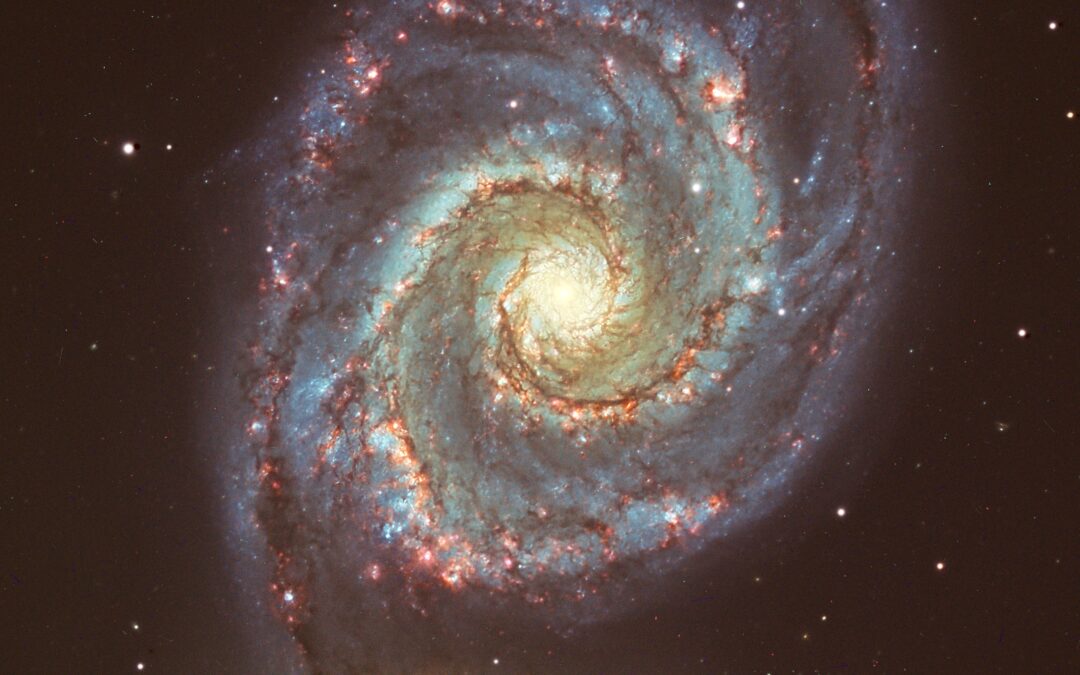By Bryony Richards, Ph.D.

The Whirlpool Galaxy, also known as Messier 51 (M51) or NGC 5194, is a stunning grand-design spiral galaxy with two prominent, well-defined arms. It lies in the constellation Canes Venatici, near the handle of the Big Dipper (Ursa Major), at a distance of roughly 25–30 million light-years from Earth.
Appearing nearly face-on, M51 showcases long, graceful lanes of stars and gas laced with dust, characteristic of its spiral class. It was first cataloged by Charles Messier in 1773 and later became the first galaxy identified with a spiral structure (by Lord Rosse in 1845). M51’s spiral arms are not just beautiful, they are stellar nurseries, compressing hydrogen gas and birthing clusters of new stars.
Interaction with Galaxy NGC 5195 and Star Formation
M51’s beauty is enhanced by its cosmic dance with a smaller companion galaxy, NGC 5195, which appears near the tip of one of M51’s spiral arms. Astronomers have long suspected that the Whirlpool’s grand spiral arms owe their prominence to this close encounter. The gravitational tug of NGC 5195 creates tidal
forces that compress gas in M51’s disk, triggering bursts of star formation along the spiral arms. Indeed, Hubble observations show NGC 5195 currently passing behind M51, having glided past it for hundreds of millions of years.
Observing M51 in the Spring and Summer
M51 is a favorite target for amateur astronomers, especially in the spring months. From the Northern Hemisphere, the Whirlpool Galaxy is best observed during March, April, and May when it rides high in the evening sky. (Around May, it culminates near zenith by about 10 to 11 PM MST) Observers at mid-northern latitudes (above ~40°N) can see M51 for much of the year; it even stays circumpolar (never setting) from about 42°N northward. During summer evenings, M51 is still visible in the northwestern sky, though it will be lower and best observed earlier at night.
Finding M51
Although its integrated brightness is about magnitude 8.4, M51’s light is spread over a ~11′ area, so dark skies and a finder chart are invaluable. To locate M51:
- First, identify Alkaid (η Ursae Majoris), the end star of the Big Dipper’s handle.
2. From Alkaid, look about 3° to the west (roughly a binocular field) to find the 4th-magnitude star 24 Canum Venaticorum.
3. Then, move about 1° north-east to a 6th-magnitude star, and continue about 2° south to a small triangle of 7th-magnitude stars. M51 is located just west of the southernmost star in that triangle.

